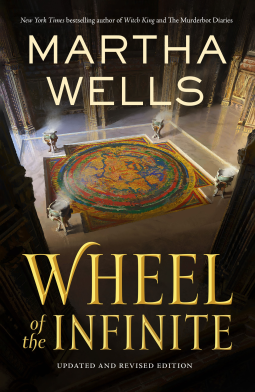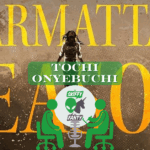I’m a longtime fan of Martha Wells, having first stumbled across her third novel, the deservedly Nebula-nominated fantasy Death of the Necromancer, in a bookstore in 1998. Unlike that book, which can be read alone but is set in her Ile-Rien universe, her fourth novel, Wheel of the Infinite, stands alone. Maybe that’s why it didn’t get as much traction, but it’s always been one of my favorite fantasy books. Luckily for people who never heard of it, or couldn’t find a back issue, Tor Publishing Group is printing an updated and revised “author’s preferred” edition, slated for release on Nov. 19.

I urge readers who only know Wells for her wonderful Murderbot science fiction novels to give Wheel of the Infinite a try. It features Maskelle, a middle-aged, self-exiled priestess returning to the capital of the Celestial Empire for her Koshan religion’s most important rite. Every year, the sand painting of the Wheel of the Infinite is redrawn; every 100 years, this ritual renews and recreates the fabric of the world itself. When she arrives, she finds that something is marring the painting-in-progress with a black storm; she must find and stop the source of this taint before it devastates the world.
There’s a lot more going on in this book, of course. We first meet Maskelle when she’s on the road with a troupe of players; she goes tramping through the jungle to find herbs that can cure a sick child, encounters a pirate outpost, and saves their prisoner. That was the scene that made me sit up, when I realized that Maskelle was a badass, though I still didn’t know the extent of her power, and she herself felt disconnected from it because she no longer heard the Voice of the power she served, after a fatal misinterpretation of a vision had led to drastically bad consequences.
The prisoner she saves is Rian, a swordsman from the outskirts of civilization, where people are light-skinned instead of the Celestial dark-skinned norm. A fugitive himself, he follows Maskelle back to the troupe, is fascinated by her, and acts as her bodyguard and more; she eventually takes the younger man into her bed. Rian plays some important points in the plot, and we get some scenes from his viewpoint, and as a newcomer, he provides a good excuse for explanations of How Things Work Here.
Maskelle and Rian are a great couple. He respects her instantly; her respect of him takes a little longer, but eventually she trusts him enough to have him take on an important mission for her. Wells fades to black for sex scenes, but they obviously find each other hot, and joke about how others perceive their relationship.
Maskelle is the star, though, and she is magnificent. She has made huge mistakes in the past, so questions herself and her relationship with the powers that be, but once she knows what she needs to do, she is a fierce, unstoppable force. But she’s a star who works well with others, from the high priest to the actors who help her with searches/ She’s as focused on helping others as on finding and following her destiny, and whether dealing with recalcitrant officials, a relative with reason for a huge grudge, or a creepy, cursed puppet, she knows how to be patient and when to take immediate, forceful action.
It’s been a few years since my last reread of Wheel of the Infinite, but I can’t tell whatever subtle improvements Wells may have made to her text — everything I remember happening in previous readings happens here, and nothing new jarred me. The eARC has placeholder “Dedication tk” and “About the Author TK” sections (where TK stands for “to come”) and I hope that the “Acknowledgements TK” will include some reflections from Wells about her career in writing, along with thanking various people.
The biggest change I know of is in the cover, which wasn’t included in the eARC, either, but is easily searchable online. It’s a depiction of the Wheel of the Infinite itself, the sand painting that reflects and recreates reality, in a chamber in a temple, with four braziers around it, and it’s very pretty and impressive. However, I’m a little sad that it doesn’t portray Maskelle herself. Black female protagonists are not quite as rare in fantasy novels or their covers now as they were in the early 2000s, but seeing that representation is still important. Perhaps Tor is sidestepping problems seen from the previous publisher, which issued a variant cover that whitewashed Maskelle and even a cover that didn’t show her at all, just the light-skinned swordsman Rian.
I adore this book for its great, middle-aged female protagonist, her very capable romantic partner/sidekick, the fascinating worldbuilding (including making dark-skinned people the center of civilization), the plot, the elements of weirdness that arise when the Wheel goes awfully awry, the teamwork and interplay between characters, and the eventual dramatic revelations that finally make sense of the mysteries woven throughout the book. Wheel of the Infinite is superb.
Content Warnings: Deaths, violence.
Comps: The Dreamblood Duology (The Killing Moon and The Shadowed Sun), by N.K. Jemisin.
Disclaimers: I received a free eARC of the book from the publisher.







